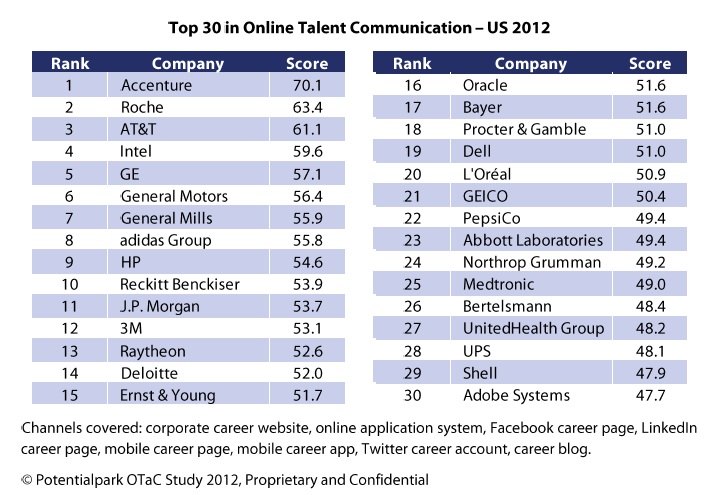When American college students and recent graduates go looking for a job, they want quick answers, trustworthy insights, and evidence the employers know how to use the various social media channels to add value to their search.
So says PotentialPark, a Swedish recruitment market research firm. Its annual survey (U.S. results were not posted as of this writing) of 3,552 U.S. college students and recent grads found young job seekers are comfortable with social media and expect that you will be too. While 86 percent of them make use of company career sites, more than half (56 percent) expect to find a company on Facebook, and 69 percent expect you to be on LinkedIn.
What PotentialPark found when it audited the corporate career sites of almost 500 U.S. firms was that only 57 percent link to their Facebook page; 79 percent connect to LinkedIn or some other professional network. The career site itself, says PotentialPark, “rarely offers any interaction.”
“Can employers keep up?”
That’s a mistake, considering 61 percent of the young job seekers say their reason for interacting with employers online is to get in touch with recruiters. (Other reasons that ranked almost as high were: finding interesting jobs (60 percent); building their professional network (55 percent); and, getting realistic insights and interesting background information (51 percent).
 “No matter which channels they use,” says PotentialPark, “jobseekers want to find relevant information quickly and easily with no time wasted searching. Customized, target job offers (opportunities), email job alerts, and a way to track the status of their applications are high on their wish list.”
“No matter which channels they use,” says PotentialPark, “jobseekers want to find relevant information quickly and easily with no time wasted searching. Customized, target job offers (opportunities), email job alerts, and a way to track the status of their applications are high on their wish list.”
Says Julian Ziesing, head of research at PotentialPark, “Jobseekers in the U.S. have gone multi-channel. The question is, ‘Can employers keep up?’”
The answer is that some can. According to PotentialPark’s detailed analysis of 117 top employers, Accenture ranks at the top in online recruitment communication. It not only has the best career site, Accenture has the best mobile presence, and ranked 10th for its Facebook efforts. It’s on Twitter, has a career blog, and its LinkedIn presence includes employee testimonials, a video, and career path information for its global operations.
Website design from a job-seekers point of view
Accenture and several of the other companies that made PotentialPark’s top 30 list also appear on lists of companies rated for Europe, the U.K., France, and Germany. What they all have in common, says the market research firm, is that they learned from experience. “They have gone through a learning process that typically involves trial and error,” says PotentialPark.
They design their efforts from a job seeker’s point of view, leveraging the attributes of each channel for maximum value.
Much of what PotentialPark’s young job seekers said was important to them is echoed in a report on the candidate experience, issued last month by the Talent Board. The non-profit group of prominent recruiting industry leaders, manages the Candidate Experience Awards, which recognizes employers practicing “exceptional and exemplary recruiting, and hiring methods.”
Some of the companies on PotentialPark’s top 30 also earned recognition for their candidate experience. These include addidas, PepsiCo, Deloitte, and General Mills.
After reviewing some 11,700 candidate surveys, submitted by some two dozen employers, the Talent Board found the company career site was the only channel used by a majority of candidates. Direct contact, either via phone calls or email, was a primary communication channel for job seekers. LinkedIn was the most commonly used social media platform. Job seekers went their primarily for research, not for specific positions.
The whitepaper from the Talent Board goes into much more detail about the entire job seeker experience, including what happened when they submitted an application. (Some 40 percent reported hearing nothing.)
